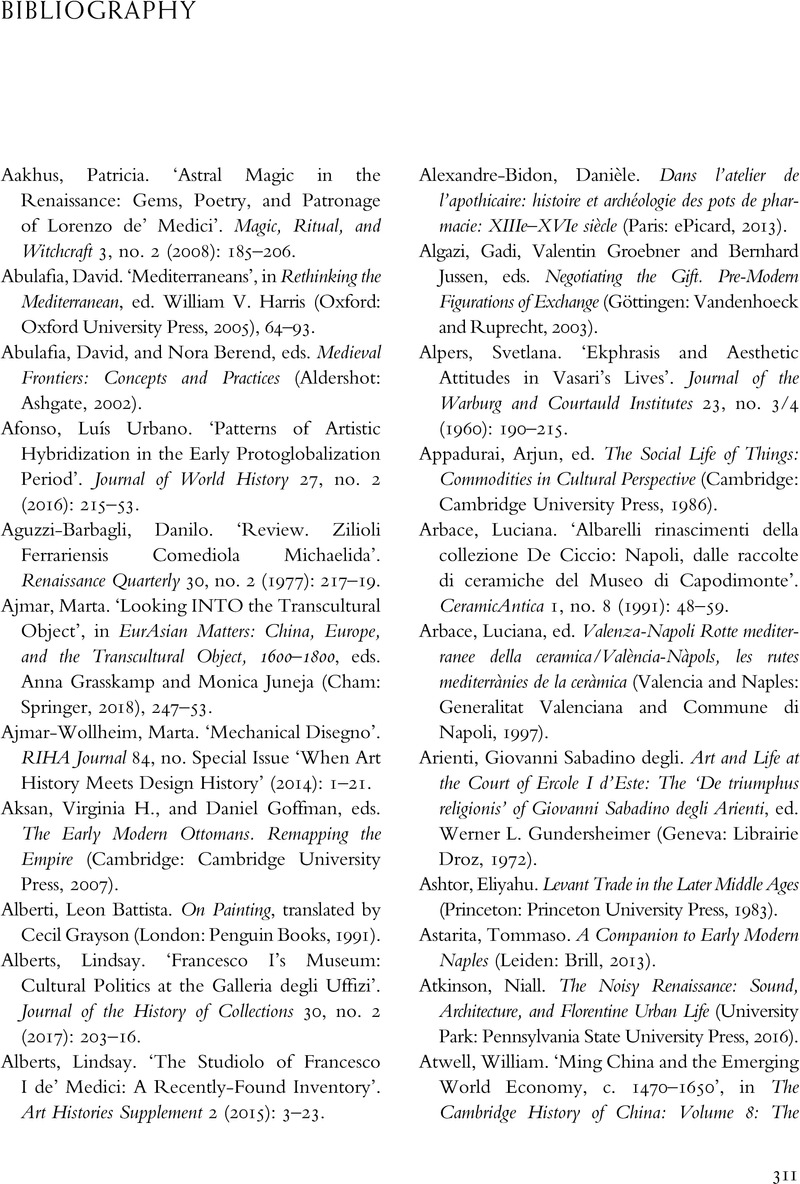Book contents
- Courtly Mediators
- Courtly Mediators
- Copyright page
- Contents
- Plates
- Illustrations
- Preface and Acknowledgements
- Primary Sources and Abbreviations
- Introduction
- Chapter One Diplomatic Entanglements
- Chapter Two Mobile Things/Mobile Motifs
- Chapter Three The Peregrinations of Porcelain
- Chapter Four Fit for the Gods
- Chapter Five From the Silk Roads to the Court Apothecary
- Conclusion
- Appendices
- Bibliography
- Index
- References
Bibliography
Published online by Cambridge University Press: 26 July 2023
- Courtly Mediators
- Courtly Mediators
- Copyright page
- Contents
- Plates
- Illustrations
- Preface and Acknowledgements
- Primary Sources and Abbreviations
- Introduction
- Chapter One Diplomatic Entanglements
- Chapter Two Mobile Things/Mobile Motifs
- Chapter Three The Peregrinations of Porcelain
- Chapter Four Fit for the Gods
- Chapter Five From the Silk Roads to the Court Apothecary
- Conclusion
- Appendices
- Bibliography
- Index
- References
Summary

- Type
- Chapter
- Information
- Courtly MediatorsTranscultural Objects between Renaissance Italy and the Islamic World, pp. 311 - 334Publisher: Cambridge University PressPrint publication year: 2023



